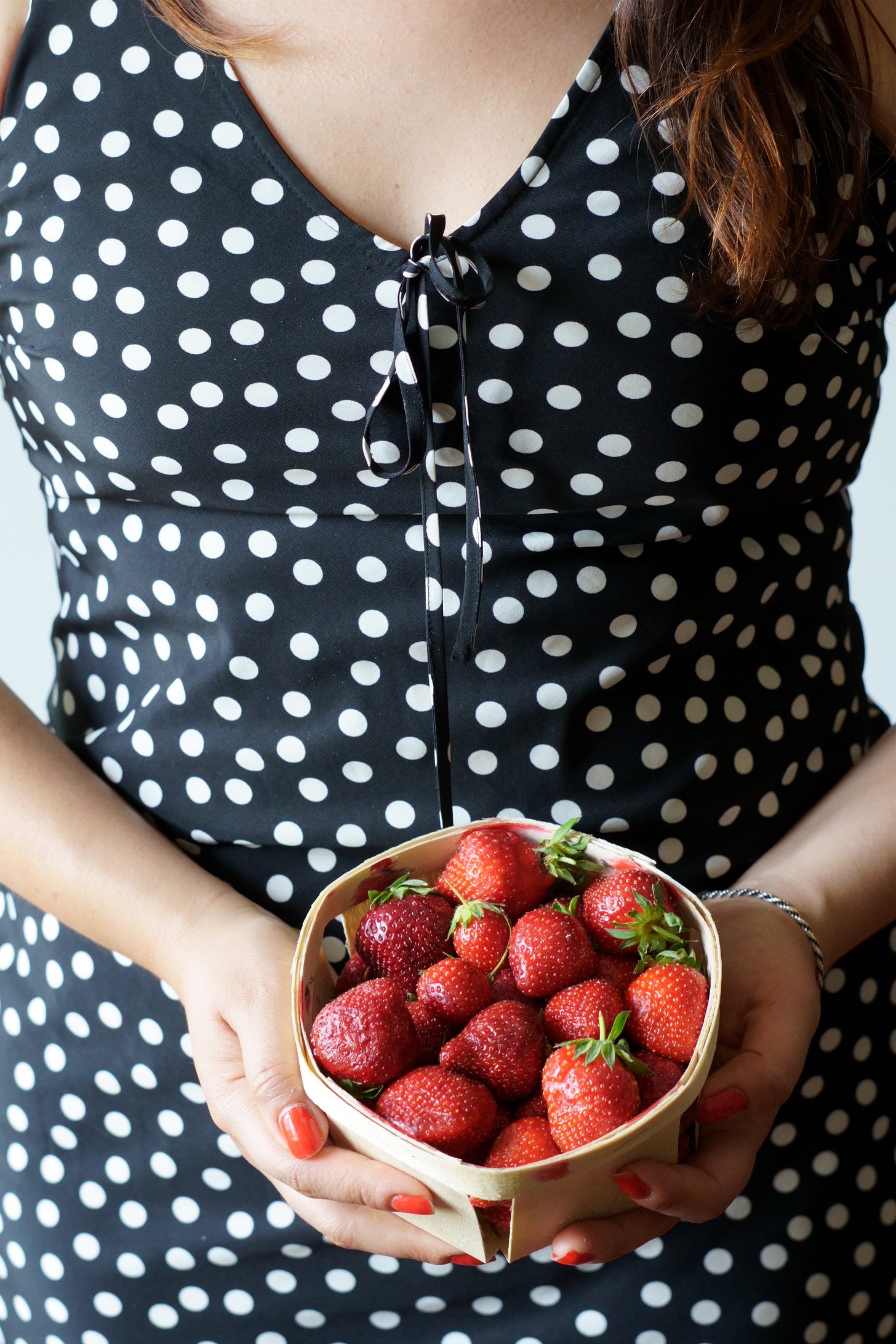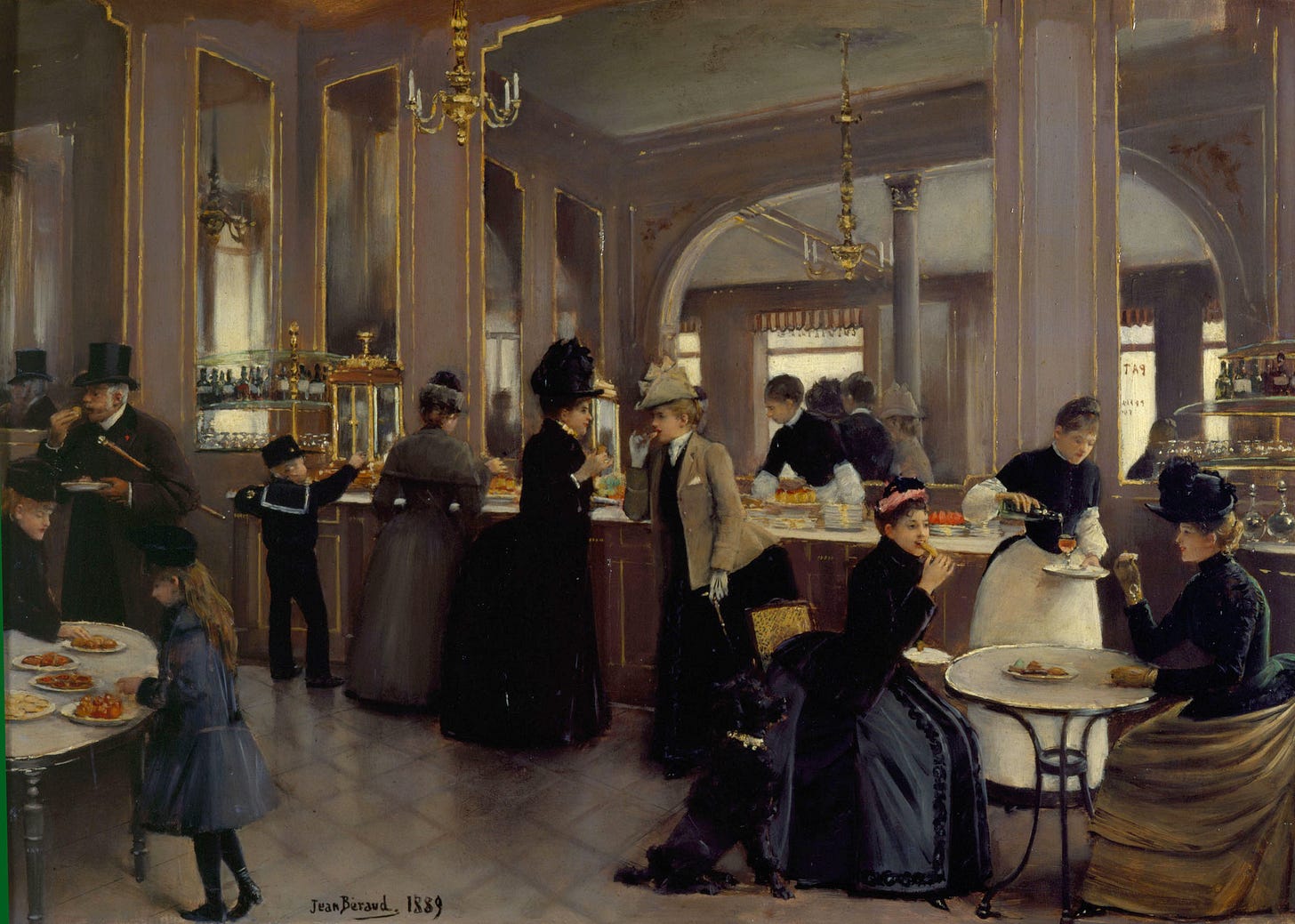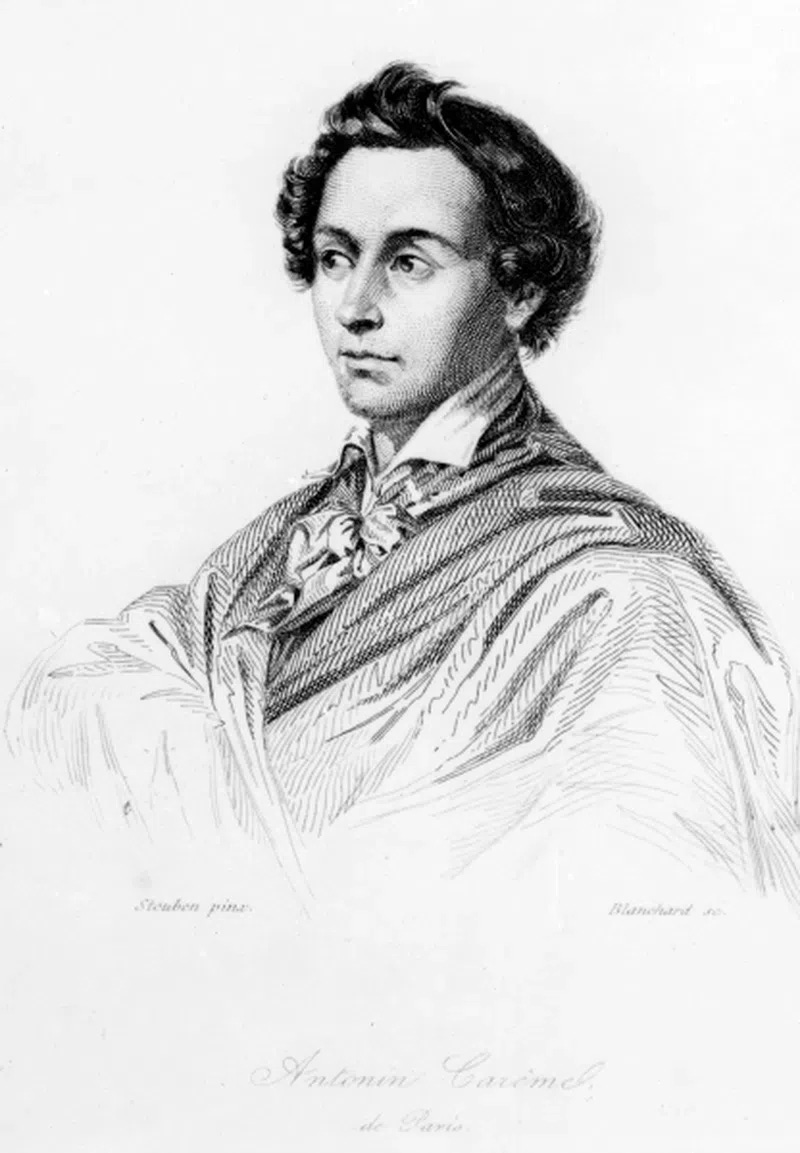It’s time to make things a little sweeter!
After five weeks, we’ve rounded off the ‘Cooking with Vegetables’ series and as of this week, we’ll be starting a series on classic French desserts and pastries. Don’t expect complicated techniques or long recipes here. We’ll be making delectable sweet treats with simple ingredients. And the best part? As an added bonus, not only will we dig into a hearty slice of food history with each recipe, but I’ll also be discussing a food painting. Why? Well, not only because cooking is edible art, but because it’s such a joy to share fun culinary tidbits at the table. You’ll delight your family and friends with your cooking and your knowledge of food and art!
This week, we’ll be kicking things off with a rustic raspberry and strawberry clafoutis. But is it really a clafoutis? Before I give you the recipe, we’ll dig into its history. After that, we’ll check out a delightful work of art by Jean Béraud, who was influenced by Impressionism and known for his paintings depicting typical Parisian scenes during the Belle Époque.
Please note that the first post in this series is free for all subscribers, but the next ones will only be available to paid subscribers.
Is it really a clafoutis?
The clafoutis is a classic French dessert made with cherries and a thick, custardy batter. Instead of cherries, other fruits can be used, and you can even use savory ingredients such as cheese and vegetables.
Until recently, I shamelessly wrote about my delicious ‘clafoutis’ with peaches, or the one with apple and blackberry. I told everyone about my savory ‘clafoutis’ with courgette, carrot and goat cheese. Just add a salad and a bottle of Sauvignon Blanc, and you’ve got yourself one fine dinner!
Oh how I turned a few shades of red when I proudly served my friend Marie-Louise my ‘clafoutis aux figues’ with figs, almonds and honey. “That’s not a clafoutis,” she bluntly pointed out. Sure, there are worse things in life, but I admit, I felt fairly offended.
Time for a little research.
The word ‘clafoutis’ was first noted in 1864 and is derived from the Occitan word ‘clafir’ (to fill), derived from ‘claufir’ (an Old French word meaning to fasten with nails). The real clafoutis is originally from Limoges in Limousin (also known for their beautiful porcelain) and is made with small, sour cherries called ‘griottes’, or morello cherries. The cherries are unpitted, which makes them less likely to release juice that can ‘stain’ the batter. Additionally, the pits impart a characteristic almond flavor to the batter. Yet not many home cooks are keen on using unpitted cherries for fear of being held accountable for disasters such as choking or broken teeth. Nevertheless, I always go the authentic route and serve my cherry clafoutis with plenty of warnings.
If I’m to believe culinary writer and critic Curnonsky (1872-1956) however, I have neither the ingredients nor the nationality to ever be able to make a real clafoutis. He maintained that the only cherries that could be used in the dessert came from Limousin, and that making a perfect clafoutis was a talent reserved solely for ‘les Limousins’, whose blood is as dark as that of the cherries: “Le vrai clafoutis exige d’abord de savoureuses petites cerises noires que l’on ne trouve qu'en Limousin. Pour atteindre la perfection du clafoutis, il faut avoir du sang limousin dans les artères, du beau sang foncé comme le sang des cerises.”
Too bad for me, or ‘tant pis,’ as they would say in France.
In Auvergne they make an almost identical dessert, but there it goes by the name of ‘millard’ or ‘milliard.’ The same deal in Burgundy, except there it’s called ‘cacou.’ If the dessert is made with other fruits, it’s none of the above. It’s called a ‘flognarde’ (or ‘flaugnarde’). And that is exactly what I had served my very frank friend: a ‘flognarde aux figues!’
But what then, should I call my ‘clafoutis’ with courgettes? According to my friend, it would simply be called a ‘flan.’ Interestingly, that very word caused a lot of commotion in Limoges when it was used by l’Académie Française to describe the clafoutis (“sorte de flan aux fruits”). Calling a clafoutis a ‘flan.’ The nerve!
My shame turned to relief one afternoon at a cozy bistro in Reims. On one of those typically French chalkboard menus, I read: ‘clafoutis aux tomates cerises’ and even ‘clafoutis aux poires et chocolat.’ Apparently, most French are not that fussy. Just Google the word ‘clafoutis’ followed by just about any ingredient, and you’ll see hundreds of recipes showing up.
The realization that I had not made a horrendously stupid mistake felt good, so I invited Marie-Louise over for lunch again. And served her a CLAFOUTIS with cherry tomatoes and red onion. “You can argue about the name, but you can’t argue about the taste,” I told her as she polished off her plate.
This week we’re making one of my favorite summer clafoutis variations with raspberries and strawberries. It’s lovely with only a dusting of powdered sugar but also great with a dollop of crème fraîche or a scoop of vanilla ice cream.
Raspberry & strawberry clafoutis
Serves 4
Ingredients:
Softened butter, to grease the baking dish
150g strawberries (halved or quartered, depending on their size)
200g raspberries
100ml single cream
200ml full-fat milk
3 eggs
70g sugar
100g all-purpose flour
1 tsp vanilla extract
Instructions:
Preheat your oven to 180°C. Butter a 27cm oval oven dish and line it with the fruit.
Whisk the eggs with the sugar and vanilla extract.
Whisk in the cream.
Whisk in the flour followed by the milk.
Pour the batter over the fruit. Bake for 35 minutes and serve with powdered sugar, crème fraîche or vanilla ice cream.
NOTES:
The clafoutis will rise as it bakes and deflate as it cools. Allow to cool slightly before serving.
If using large strawberries, cut them into quarters.
Use organic fruit and don’t wash it as doing so will water down its taste.
La Pâtisserie Gloppe on the Champs-Elysées, Jean Béraud, 1889, Musée Carnavalet, Paris (and the ‘Chef of Kings and King of Chefs’)
Pictured in this tableau by Jean Béraud (1848-1935) is the popular Pâtisserie Gloppe in Paris, a little paradise offering all kinds of elegant pastries, but also a great place to have a glass of wine or other tipple. It was an informal gathering place, as is evident from the people eating with their hands or while standing at the bar as well as the lack of tablecloths. But don’t be fooled. Gloppe was only frequented by a well-heeled clientele who could afford such luxuries. Just look at the fashionable clothing!
From approximately 1850 to 1915, there were four Gloppe pastry shops in Paris, including the one Champs-Elysées. During the 19th century, enjoying beautiful pastries was all the rage in Paris, especially after the rise to fame of Marie-Antoine Carême (France’s first celebrity chef) in 1810. Carême was not not only the founding father of haute cuisine, ushering in the dawn of a culinary golden age marked by lavish tables and fine dining, but he was also a genius pâtissier.
His road to fame began around the age of 15 when he was hired to work alongside renowned pâtissier Sylvain Bailly on rue de Vivienne, not far from the bustling shopping arcade of the Palais-Royal. In this swanky neighborhood frequented by those who wanted to see and be seen, the young man’s talent soared – literally – to sweet heights.
Carême taught himself to read and had a penchant for learning. Encouraged by Bailly to broaden his intellectual horizons, he spent his spare time at the nearby Bibliothèque Nationale, studying the history of food and immersing himself in books on classical architecture, his biggest passion. He would then attempt to recreate the structures he saw, first on paper and later as edible towers made of marzipan, sugar and pastry. These so-called pièce montées served as ornate centerpieces at banquets and were prominently displayed at the pastry shop window, much to the awe of passers-by. It wasn’t long before his magnificent sugar sculptures landed him commissions with Charles Maurice de Talleyrand-Périgord, the respected diplomat who had the gift of gab, not to mention an insatiable appetite for women and eating well.
After two years, Carême left Bailly, embarking on an illustrious career that took him into the kitchens of society’s crème de la crème. Carême opened his own bakery on rue de la Paix and continued to accept commissions for his extraordinary confections, even creating the wedding cake for Napoleon and his second bride Marie-Louise Hapsburg in 1810 and a pièce montée in the shape of an Italian gondola for the christening of their son a year later.
Before signing off this week, I’d like to leave you with a quote by Parisian gourmand Grimod de La Reynière:
“A well-ordered dessert may also on its own make the reputation of a table.”
Hungry for more? Check out my exclusive interview with one of the most innovative French pastry chefs, Johanna Le Pape.






